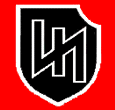 |
Panzer Division Kempf and the Buildup |  |
 |
Panzer Division Kempf and the Buildup |  |
|
A formal SS Division did not exist until October 1939, however certain SS-VT units did participate
in the Polish Campaign. In July 1939, The Oberkommandoheer [OKH] decided to create
a unique unit in preparation for the assault on Poland. This unit was officially
designated as the East Prussian Tank Unit and command was given to Generalmajor Werner Kempf.
Kempf was the former commander of the 4th Panzer Brigade, and after taking command of the East Prussian
Tank Unit, the unit would be referred to as Panzer Division Kempf. Along with Kempf, other members of the
4th Pz. Brigade (which was subsequently disbanded) formed the core of the new division staff.
The Staff set up headquarters at the Stablak Training area, south of Königsberg, East Prussia and made preparations for the remaining units of the division to arrive. Pz. Division Kempf was indeed a unique unit, since it was the first Heer division to be composed of both Heer and Waffen SS units. The following units come under the divisions command (all SS Units are from the SS-VT):
The "official" German government explanation for the sudden movement of large numbers of troops into East Prussia was they were part of a new Panzer Division and would participate as "Wehrmacht representatives" at the Tannenberg celebration. The Tannenberg Celebration was to commemorate Hindenberg's victory at the battle of Tannenberg in World War I. In fact a large memorial had been constructed at the battle site in which were entombed the remains of Hindenberg and his wife. Despite the fact that Pz. Division Kempf was structured as a regular Heer Panzer Division, in fact it was no more than a reinforced Pz. Brigade. Pz. Kempf only had one (1) motorized infantry regiment as opposed to the authorized strength of two regiments. In addition, the unit was severly lacking in vehicles with cross-country capability, except for the 7th Pz. Regiment and the SS-Aufklarungs Battalion. However, the division was a unique experiment, and became the predecessor of the first SS division. Recognizing the potential for further expansion of the Waffen SS, Gruppenführer Paul Hausser accompanied the unit for the duration of its operations in Poland. Throughout the month of August, the soldiers of Pz. Div. Kempf were engaged in manouvers as well as assisting the local population with the fall harvest. At the same time preparations for the Tannenberg celebrations continued. The preparations (which even involved bringing in WWI veterans from Germany) were used to disguise the true purpose of the military build-up in East Prussia, that being the invasion of Poland. On August 19th, Pz. Division Kempf, along with 61. and 11. Infanterie Divsionen were assigned to the I Armee Korps. This resulted in the division moving closer to the border with Poland. Despite the obvious tension that was mounting between Germany and Poland, the units of the division continued to receive orders to practice for the Grand Parade planned for the Tannenberg celebrations. However, by August 24th, the planned parade did not occur and the division was moved even further south to Kommusin Forest near Neidenberg, well within site of the border. The various Regimental and Battalion commanders and their adjutants made regular reconnaisance trips, scouting out possible assembly areas for the Division. After negotiations broke down between Germany and Poland on August 25th, the division's troops were ordered to move forward to their assembly areas along with the rest of I Armee Korps. Orders arrived soon after that the Korps' attack would begin the next morning at 0600 hours. After dark, the subunits of "Deutschland" deployed along the East Prussian/Polish border. At the same time the divisional artillery began to emplace its batteries to support the assault in the morning. Pz. Division Kempf occupied the souther most position of in East Prussia, directly in front of a strong Polish bunker system known as the "Mlava position". At the last minute (literally) the order to attack was postponned. However, due to the poor roads, and a recent rain storm, the message was not passed to all elements of "Deutschland" in time. A reconnaissance patrol from 9./Deutschland had advanced several km across the border. No shots were fired and it required considerable effort to get the orders to all the units. It was not until almost 0900 that all the units had been recalled to their assembly points. The "false start" in some respects had been a good learning exercise since it became apparent that Polish forces would not engage the division at the border, and that the first point of resistence would probably be encountered at the Mlava Position. After the recall, the units of the I Armee Korps were withdrawn from the Polish frontier, and reassembled at the former divisional command post at Neidenburg. Negotiations to prevent hostilities between Poland and Germany fell through for a final time on August 30th, and once again the troops of Pz. Division Kempf were brought together with the other units of the I Armee Korps to prepare for an advance into Poland. A briefing for the commanders of the Regiments took place in the divisional HQ at Neidenburg. To the amazement of the officers assembled, Generalmajor Kempf ordered the division "back into their old foxholes". This was an odd order considering one of the tenants of war was not to occupy previous assembly positions for a second time if they had been originally discovered by the enemy. Despite this, the men of SS Regiment "Deutschland" moved into their own positions and waited for the coming events. The attack was set for 0445 on September first, and this time no halt order arrived to arrest the invasion. |